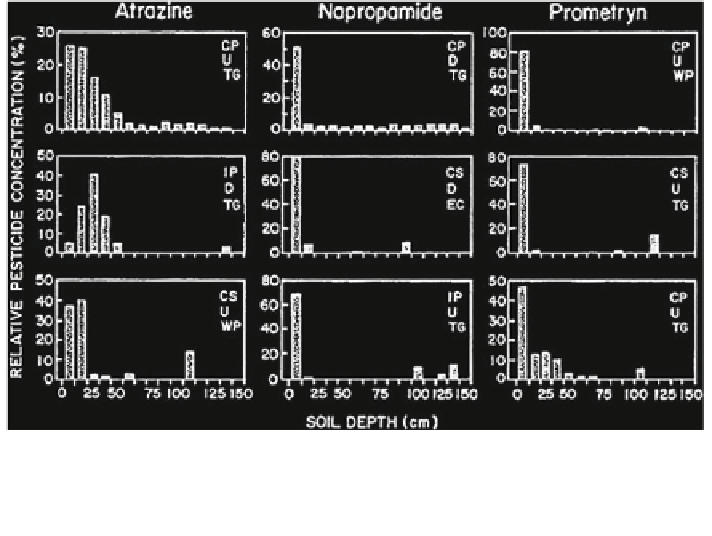Geoscience Reference
In-Depth Information
Fig. 12.42 Examples of pesticide concentration versus depth, indicating preferential flow of
each pesticide in individual field plots. Symbols: C continuous; I intermittent; P ponding;
S
sprinkling;
TG
technical
grade;
EC
emulsifiable
concentrate;
WP
wettable
powder;
U undisturbed; D disturbed (Ghodrati and Jury
1990
)
following treatments: two formulations of each herbicide, two soil-surface prep-
arations, and four flow conditions involving continuous or intermittent sprinkler
and flood irrigation. Immediately after herbicide application, the soil was irrigated
and sampled to a depth of up to 150 cm after six days. From the results presented
in Fig.
12.42
, we see that the chemicals were transported to a depth of more than
100 cm; according to their retardation factor values, these chemicals would be
expected to be far less mobile. Differences in the redistribution with depth were
due to the various treatments, but the general trend of downward transport was
attributed to preferential flow.
12.4 Colloid-Mediated Transport of Organic
Contaminants
Organic contaminants retained on colloid surfaces may be transported by flowing
water through the vadose zone and reach the groundwater or be relocated on the
land surface by runoff processes. A series of field and laboratory experiments
identified the spatial redistribution of contaminants by surface runoff and con-
tamination of the subsurface by vertical transport of colloids. These findings
demonstrate that colloid-mediated transport of contaminants is a major environ-
mental hazard.

